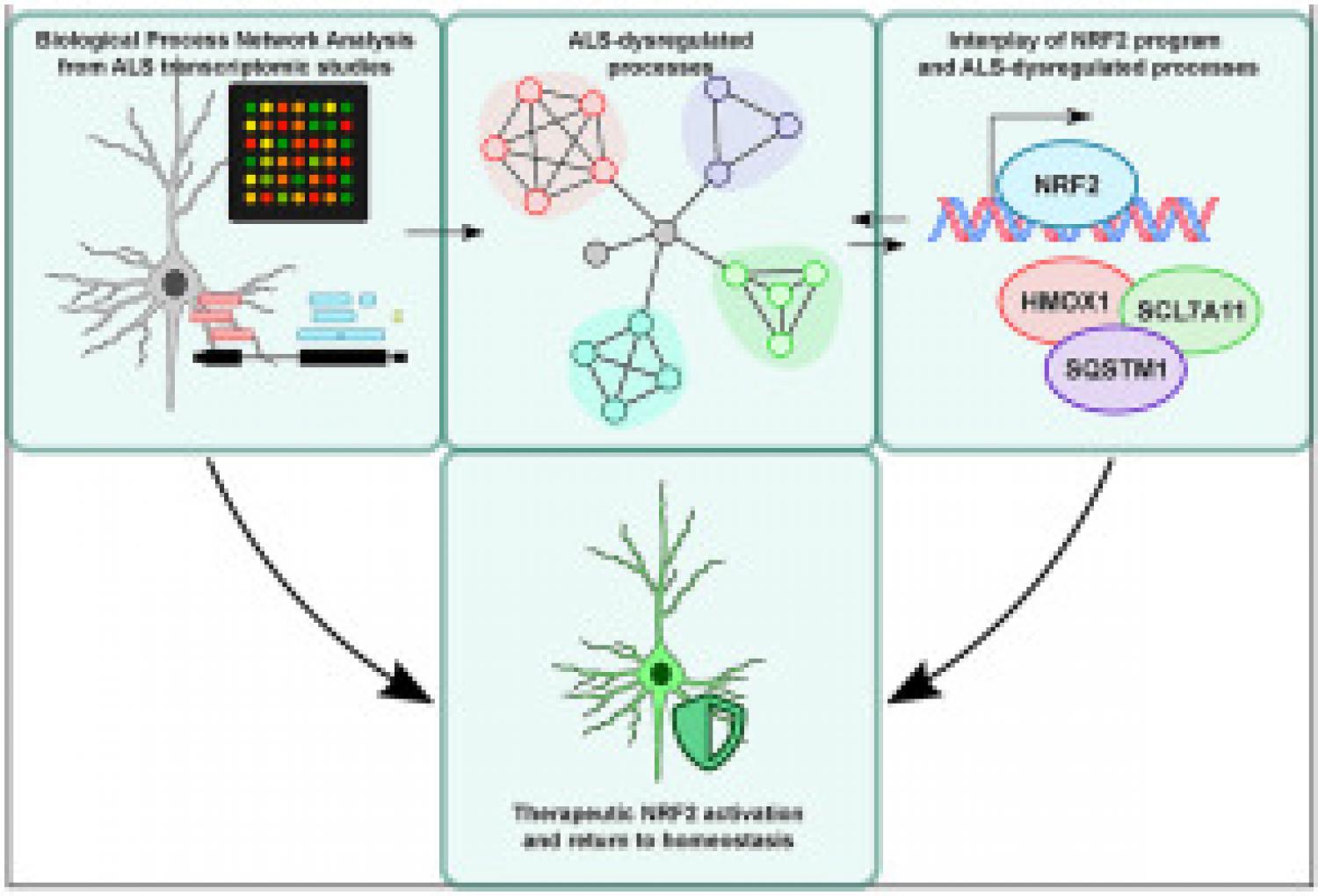
Amyotrophic Lateral Sclerosis (ALS) is a devastating heterogeneous disease with still no convincing therapy. To identify the most strategically significant hallmarks for therapeutic intervention, we have performed a comprehensive transcriptomics analysis of dysregulated pathways, comparing datasets from ALS patients and healthy donors. We have identified crucial alterations in RNA metabolism, intracellular transport, vascular system, redox homeostasis, proteostasis and inflammatory responses. Interestingly, the transcription factor NRF2 (nuclear factor (erythroid-derived 2)-like 2) has significant effects in modulating these pathways. NRF2 has been classically considered as the master regulator of the antioxidant cellular response, although it is currently considered as a key component of the transduction machinery to maintain coordinated control of protein quality, inflammation, and redox homeostasis. Herein, we will summarize the data from NRF2 activators in ALS pre-clinical models as well as those that are being studied in clinical trials. As we will discuss, NRF2 is a promising target to build a coordinated transcriptional response to motor neuron injury, highlighting its therapeutic potential to combat ALS.
